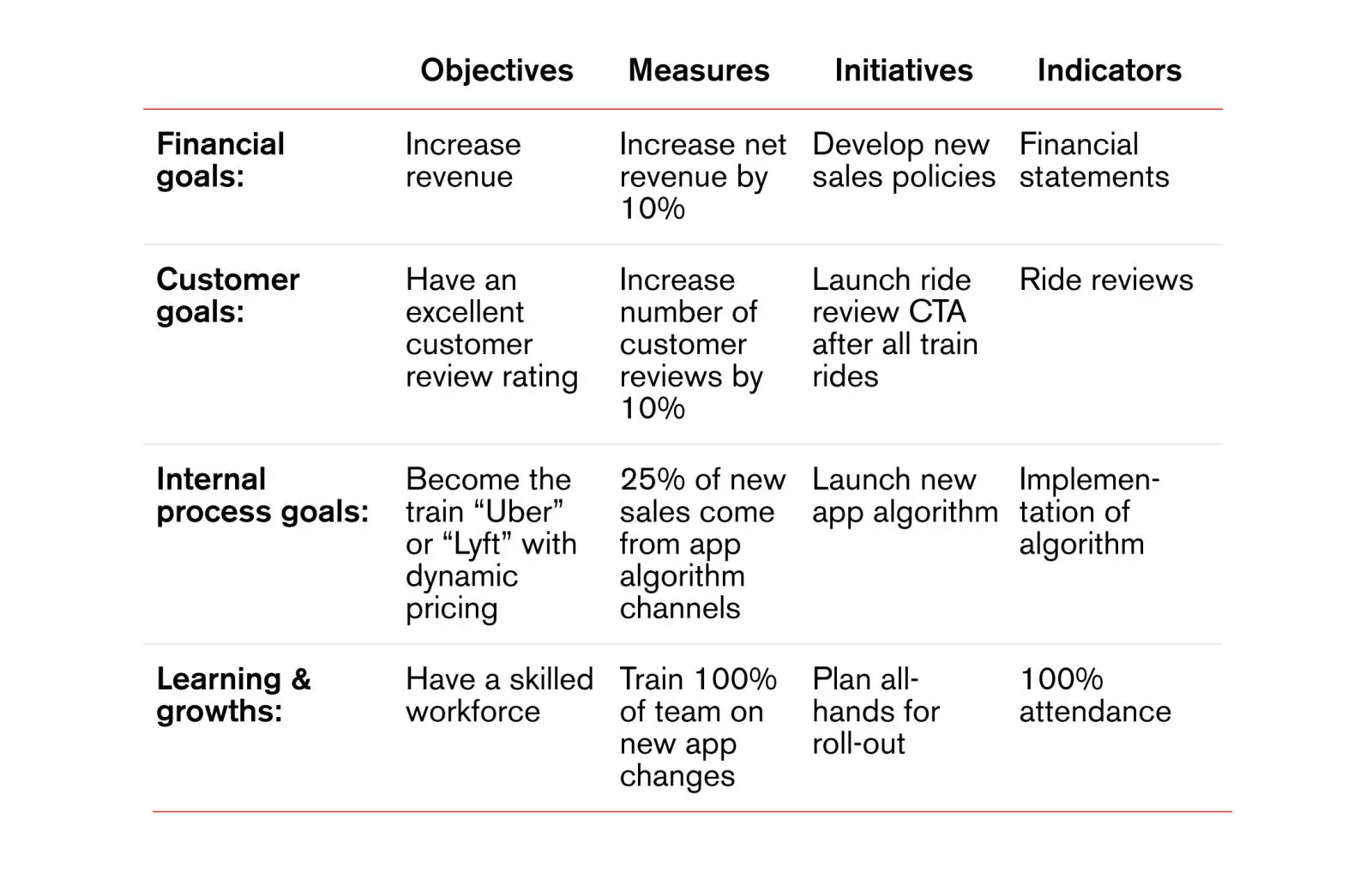Summary
Most major businesses and organizations use a formal framework to measure and track progress. One of the most common is the Balanced Scorecard Framework (BSC). In this article we’re sharing how you can use OKRs to not only complement it, but amplify it.
What is the Balanced Scorecard model (BSC)?
Most major businesses and organizations, from government to nonprofit, use a framework to measure and track progress. One of the most common is the Balanced Scorecard Framework (BSC). This tool has become widely adopted for its approach to creating and communicating strategy. But stating a strategy isn’t the same as executing it. For that, you need to track progress with measurable goals. In this article, we explain the power of the Balanced Scorecard Framework and how OKRs both complement and amplify it.
Developed by Dr. Robert Kaplan of Harvard University and Dr. David Norton, the name “balanced scorecard” comes from looking at both financial and strategic measures to get a more “balanced” view of performance. Prior to BSC, companies often used only short-term financial performance to measure success. What differentiates the BSC from other models is the inclusion of non-financial measures that contribute to long-term success. BSC maps an organization’s strategies across four aspects of performance: Financial, Customer, Internal Processes, and Learning & Growth. This framework does more than just offer a visual picture of strategy — it helps connect the dots between an organization’s intentions, its capacity to execute, and the resulting value created for the customer.
What are the key components of the Balanced Scorecard framework?
The BSC focuses on four parameters or goals of an organization, and within each goal, they’re defined by objectives (high-level organizational goals), measures (how to check in on your objectives), initiatives (what you create to achieve your objectives) and indicators (how to know if you’re on track). The four parameters are:
Financial
Takes into consideration the overall financial performance of the company and how it uses its financial resources
Customer
What matters to the customers or stakeholders the organization serves and how the company is performing
Internal Process
Looks at the quality and efficiency of the company’s systems and processes in relation to what it sells, offers or delivers
Learning & Growth
Examines what a company needs out of its people, infrastructure, technology and culture to drive breakthrough performance
Five benefits of the Balanced Scorecard framework
According to Kaplan and Norton, for companies who need to “create future value through investment in customers, suppliers, employees, processes, technology, and innovation,” success needs to be measured beyond just financial performance. Their framework offers a richer picture or way of viewing and measuring organizational success. Here are five benefits:
- Strategic Planning
Because BSC strives to be holistic, it can help organizations create a strategic plan to set priorities (where the organization is going), and specify the actions needed to get there, adjusting and assessing along the way. - Improved Communication
No one can execute a strategy they don’t understand. BSC involves being transparent across the board so that everyone understands and is aligned with the work — laying out exactly how to measure progress towards the desired outcome. - Alignment of the organization and its projects and initiatives
Success for any organization is reliant on everyone working towards the same goals. BSC gives companies the ability to better align their organizational structure with their strategic goals. And by mapping projects and initiatives to different strategic objectives, it ensures that everyone’s laser-focused on getting the right results. - Improved performance reporting
The BSC brings together the four parameters into one single management report, making it easy to monitor the overall progress of the strategic plan.
Dan Montgomery taught strategy, Balanced Scorecard, and OKR training courses, before becoming the founder and managing director of Agile Strategies. He sums up the power of the BSC model in terms of organizational alignment and looking at intangibles that lead to results—like the right people in the right jobs, an effective organizational culture, and of course, the right systems and processes. “It’s a holistic way of thinking about all the things that need to come together in order to have a successful organization."
What are the most common pitfalls of the Balanced Scorecard model?
Because BSC is rooted in high level-strategy, it tends to be most effective with mapping the big picture. Once it comes to translating that picture into execution, employees who used BSC can struggle to put day-to-day work into all four categories. Additionally, BSC uses an annual cycle, and for most employees, the pace of work moves much more quickly.
Others critique the model as being complicated, especially when agendas change frequently. For example, every time there’s a change are they required to re-map across all four categories? BSC alone doesn’t always connect to day-to-day work life.
How can Balanced Scorecard and OKRs be used together?
So how can organizations reconcile longer term strategies reflected in BSC with the more reactive or responsive ways teams work? By complementing BSC with a goal-setting framework called Objectives and Key Results, or OKRs.
OKRs are set a few times a year, and are measured more often, typically with weekly check-ins. This makes them a great complement to the longer cycle of BSC.
BSC is also a reflection of an organization’s holistic strategies for the year. They may or may not be ready to operationalize immediately. In contrast, OKRs are not the sum of all strategies. Rather, they highlight focus and commitment on the highest priorities the organization must execute and achieve in each cycle.
For senior leadership, the BSC strategy map helps them craft OKRs by seeing what’s important for that year and then breaking it down—then up—into those smaller, measurable chunks that OKRs offer.
Here’s a BSC from a commuter rail system:

And here’s how those BSC Objectives can be broken out further to define the measures of success using OKRs:
OKRs help organizations using BSC keep pulse on the most important thing to individual departments and teams for the short term, e.g., next month or quarter. So while BSC helps develop holistic approaches to strategy, OKRs help make sure daily priorities align with high-level strategies. Learn more about how OKRs work.
Conclusion
Using a Balanced Scorecard framework is a great tool for annual planning and measurement of an organization’s success. But pairing it with OKRs can take that to the next level and ensure that everyone is on track for the same goals and, more importantly, has a clear path to get there.
If you want to learn more about using OKRs to turn strategy into results, take our OKRs 101 course or sign up for our Audacious newsletter.
